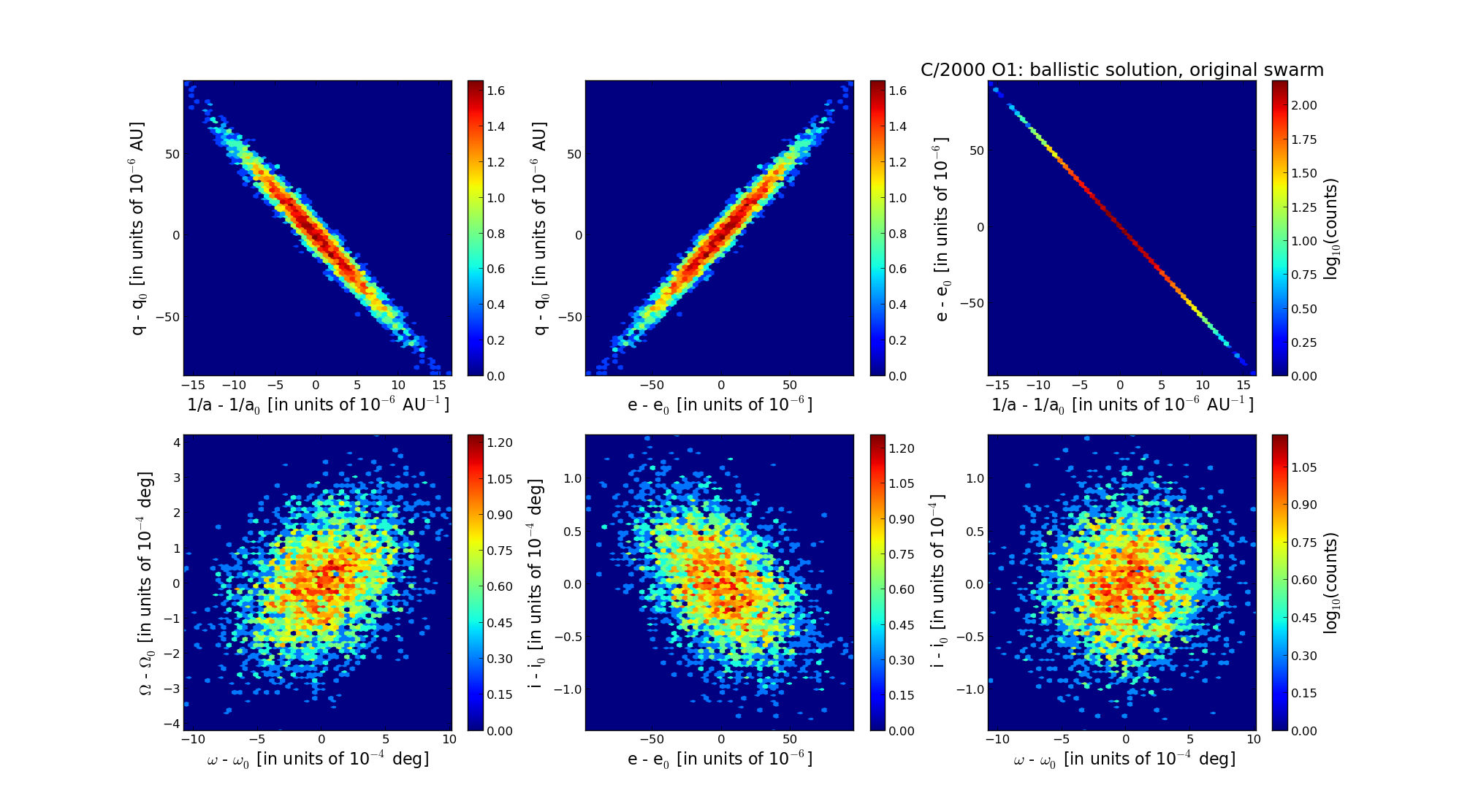| Solar System Dynamics & Planetology Group |
 |
C/2000 O1 Koehn |  |
| Solar System Dynamics & Planetology Group |
 |
C/2000 O1 Koehn |  |
| number of observations | 65 |
| number of residuals | 128 |
| data interval | 1998 Dec. 14 — 2001 Aug. 27 |
| rms [arcsec] | 0.81 |
| orbit quality class | 1a |
| Epoch (TT) | 20000117.0 | = JD 2451560.5 |
| time of perihelion passage (TT) | 20000127.393232 | ± 0.003402 |
| perihelion distance | 5.92165320 | ± 0.00002637 |
| eccentricity | 1.00069750 | ± 0.00002806 |
| argument of perihelion [deg] | 55.112765 | ± 0.000318 |
| longitude of the ascending node [deg] | 88.862048 | ± 0.000114 |
| inclination [deg] | 148.097534 | ± 0.000041 |
| inverse semimajor axis [10-6 au-1] | -117.79 | ± 4.74 |

| Epoch (TT) | 16920927 | |
| time of perihelion passage (TT) | 20000128.212579 | ± 0.003342 |
| perihelion distance | 5.91487290 | ± 0.00002655 |
| eccentricity | 0.99969254 | ± 0.00002809 |
| argument of perihelion [deg] | 55.184190 | ± 0.000313 |
| longitude of the ascending node [deg] | 88.877691 | ± 0.000115 |
| inclination [deg] | 148.072564 | ± 0.000040 |
| inverse semimajor axis [10-6 au-1] | 51.98 | ± 4.75 |
| Epoch (TT) | 23080502 | |
| time of perihelion passage (TT) | 20000127.073362 | ± 0.003379 |
| perihelion distance | 5.91375918 | ± 0.00002654 |
| eccentricity | 0.99925104 | ± 0.00002809 |
| argument of perihelion [deg] | 55.131151 | ± 0.000314 |
| longitude of the ascending node [deg] | 88.950073 | ± 0.000115 |
| inclination [deg] | 148.085030 | ± 0.000040 |
| inverse semimajor axis [10-6 au-1] | 126.65 | ± 4.75 |